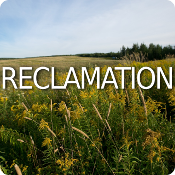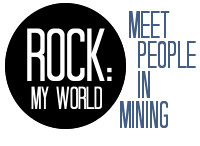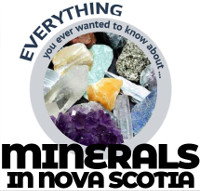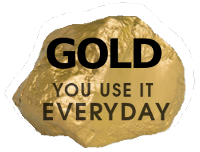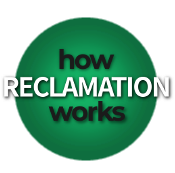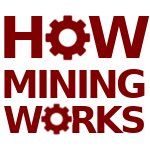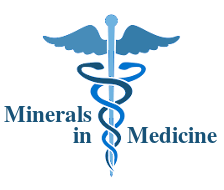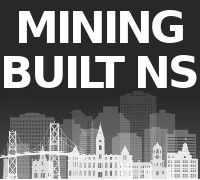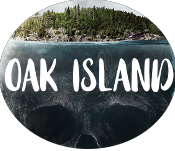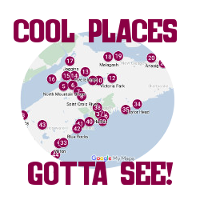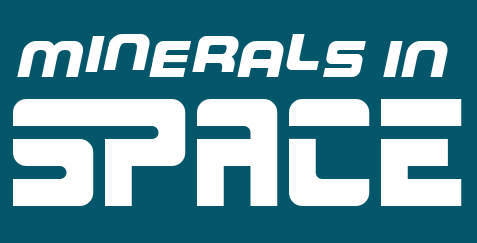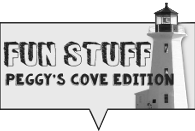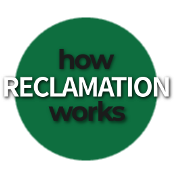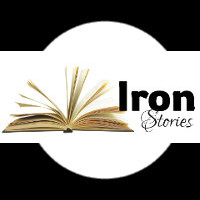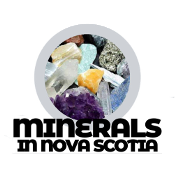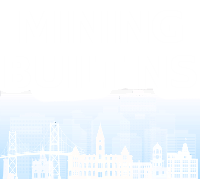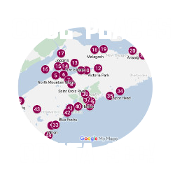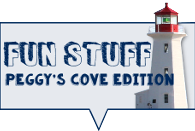- Why Mining Matters
- Jobs
- Safety
- Environment & Operations
- FAQ
- Links
- Fun Stuff
You are here

Thomas J. Brown
BESCO’s Pension
Dan McIsaac and Jim Taylor
Tius Tutty
Wilson Beaton
Aerotech Connector
Henry Swift
1885 Vale Tour
Douglas Slope Explosion
John Angus MacNeil and WWI
Florence Colliery
Joseph Walton
James Lennon
James Hamilton
1918 Allan Mine Disaster
Robert Boutilier’s Luck
Springhill’s John Anderson
Plight of Youth in 1931
Miners’ Wives Praised
Dominion No. 1B in 1931
Allan Shaft, 1931
Private Maceachern
Husseys Prospectus
William Routledge
Swell Factor in Reclamation
Gowrie Mine
River Hebert
Joggins 1904 Fire
Port Hood 1911 Flood
Lamp Cabin Memorial Park
Drummond 1873 Disaster
1872 Accidents
Springhill’s Novaco Mine
1860's Accident
New Glasgow's Linacy Mine
1913 Drummond Fires
1908 Princess Fire
Albion Mines 1913 Fire
DOSCO Miner
Cape Breton's TNT
The McCormick and Turner families
Payday Drunk
John Croak’s Victoria Cross
Atlantic Slag Company
Sydney Cement Company
1914 Coal Mine Cost
Dominion No 2
Canary in a Coal Mine
Draegermen
James Dinn
Pit Ponies
Henry Wadsworth Longfellow
1877 Accidents
Allan Shaft 1912
William Fleming
The Story of Peat
T. G. MacKenzie
Trenton Steel
1930 Stats
MacGregor Mine Explosion
MacGregor Flood
Torbanite Products Limited
Abraham Gesner and Kerosene
1860 Prince of Wales Visit
Dominion No 5
The Royal William and Stellarton Coal
Tom Pit
Terminal City
1875 Accidents
Cannons in Coal Mines
Princess Mine Explosion
Dominion No. 26
A Tale of Two Mines
Franklin Colliery
Robert J. Grant
Springhill No. 1
Mother Coo
Submarine Mines
Barrachois Mine
Fundy Coal Seam
Dominion #14
Dominion #12
Dominion No 4
Child Labour
Joggins Colliery
Safety
Bootleggers
Richmond County
Mabou Mines
Stellar Coal
English Slope
Maccan/Jubilee
The Foster Pit Fire and the Poop Solution
Thomas Edison and the Chignecto coal mine
Henry Whitney and the Dominion Coal Company
Foord Pit
Hiawatha Coal Mine
Coalburn
Springhill Disasters
St. Rose-Chimney Coalfield
Stellarton, Dorrington Softball Complex
How Does Coal Form?
Drummond Coal Mine
Sydney Coalfield and the Princess Mine
Port Morien, 1720
Port Hood
General Mining Association
Thorburn
WWII and Nova Scotia Coal
Nova Scotia's First Railway
Samuel Cunard
Stellarton’s Mining Connections
Sydney Mines
Point Aconi
Victoria Mines
Sullivan Creek
New Campbellton
Inverness and Cabot Links
The Ghost Town of Broughton
Tobin Road, Sydney Mines
Flint Island Coal Mine?!
What does Colliery mean?
Cottam Settlement
Allan Mine
Tius Tutty
Tius Tutty was a Cape Breton coal miner who survived so many accidents that he once said, “I don't know now how I'm living.”
Historical accidents like his are partly why the modern mining industry is so safety focussed - Nova Scotia's mining and quarrying industry has reduced its injury rate 90% since 1997.
Tius was born August 5, 1880, in Lorraine, near Louisbourg, according to a 1974 article in Cape Breton’s Magazine, which featured an interview with the then-93-year-old.
His father was a fisherman but drowned when Tius was about 10 years old, so Tius started fishing to help support his family. At 14, he went to sea on a schooner that delivered coal around Nova Scotia.
Not long after, he went to work in a coal mine in Bridgeport, Cape Breton. After four years there, he went on to work in Dominion and about half a year later, at the Caledonia mine in Glace Bay.
The picture of child miners below, taken at the Caledonia mine, shows Tius in the front row, seated on the left.
Tius had a number of accidents during his long mining career: “Oh, I've had a lot of accidents. There's no questions about it. If there was some thing to get, I got it.”
He described them to Cape Breton’s Magazine: “I'll tell you how I lost the sight of my eye. We were boring a hole, working at the coal face then - and the drill wasn't working. This was a power drill and there's a hole through those drills for blowing air in there for to blow the dust, the borings out - and it was sticking. It was only a brand new drill and the hole wasn't open enough to blow the air. We used to have to pull it back like that for to clear it. And a piece of stuff from the drill - whether it was a piece of shell off the drill or whether it was a piece of cement - hit me in the eye. And the shotfirer was waiting for us to finish up to shoot the coal - at that time we had shotfirers - the shotfirer had to help my buddy finish boring and shoot the coal down, finish the box. I had to go and lay down. My eye was paining, boy, like blazes. Well, then after I got up and washed it seemed to ease up and it didn't bother me too much. Boy, I got up the next morning it pained terrible.
“So my wife was living then - and it was a great remedy in them days to keep down inflammation to put cold tea leaves. You night have heard tell of it. Put the tea leaves on the eye and that kind of keep the pain down. It got a little better so I went to Dr. MacLennan in Sydney. He couldn't find nothing, but the sight was split - whatever was in there penetrated right through, split the sight.”
Because of his reduced vision, “I went to Sydney to work in the fire station for the coal company there, at the piers. You may remember when the building was there, just between the steel plant and the piers. I was there about 6 years, l guess. All nightshift, all backshift too.
“I used to have to put the water a board the ships, you know, when they'd come in. The pipes run out on the pier for water. And you hook on your hose and put it aboard the ship, fill up her tank. So this time I went out - it was New Year's Eve - I forget the name of the boat now, coal company boat - put the hose aboard of her, give her water. So I said, ‘When you're through, pull the hose ashore will you?’ So they pulled the boat off from the wharf. And let the hose drop overboard, see? And where the slack [coal] used to come down from the chutes, it froze icicles on it. And I got a hold and was pulling about like that and I lost my balance and over I goes overboard. And there was ice all around, and those piers are about 40 feet high--and look that was low tide and twice that high up I couldn't see nothing else but the ice.
“There was weights that come down from the chutes at the pier. And I tried with my gloves on, but I couldn't stick. So took my glove off - bit it off - and I put my hand on the weight. And I did the same with the other one. Steel weights. My two hands. I'll bet you I was there all of a half hour or more, sticking to the steel weights. I sung out a hundred times. Fellow by the name of Billy MacPhee, Second Engineer, happened to come out of the engine room and he heard me. The boat was off, oh, quite a distance - so they started the winches up and pulled her in and put the gangplank out and come ashore and one fellow come down - he slid down on a wire rope - he put the rope under my arms and they pulled me up. Of course, my fingers were sore after, stuck right on the frost, kind of burned me, They give me about that much rum. And they said, ‘Okay you little bugger take it off for home.’ I lived only a short ways away. I started up the hill, but my legs got stiff - kind of froze.
“And I had this hand smashed. I was working at the coal face alone that day; my buddy wasn't out so I was alone - so the manager came in, said the face wasn't very good, pretty shaky. I said the overman told me the place was all right. He said, ‘Your opinion's as good as the overman's.’ He said, ‘How many boxes you got?’ And I said, ‘Two.’ He said, ‘There's a pair of men going to sweep the colliery - I'll give you a shift with your two boxes, go up and sweep. You can bugger around after that.’ Pretty good fellow. So anyhow, you laid the road out - and I had this hand on the rail like that, the gauge - you know what a gauge is on a railroad, an arm goes across like that. And I was pushing the rail out on this side and down come a timber loose in the way. I said to one of the fellows, ‘This timber's loose, come knock it out.’ He knocked the timber out. And the roof just looked as good as that. And I had my hand on the rail. And down come this little pot - they call it a pot - it's thick in the middle and thin on the edge - right through my hand. That's how I got that.
“But I was very fortunate in a way. Cause I had that skull fracture. A fall of coal. I don't know yet how I got the skull fracture. We were trying to get a crosscut for a measuring for the opening, you know? There were two pair of us in this pillar. So I said, ‘You fellow - go and have a bite to eat, have a lunch, and I'll make the box.’ And I was loading away and walked around the box to the other side, and a big piece of the roof come down. That's all I remember. And when they took me to the surface the doctor claimed that I couldn't live to get to the hospital. I was bleeding that much. St. Joseph was just built a short time. Old Dr. MacKean was there at the time. And the nurses was trying to get my clothes off - a nurse told me this after - he said, ‘Take your time, you'll soon be able to get the clothes off easily.’ Never thought I'd recover. They had a horse ambulance at the time, no car. And I lost quite a lot of blood. And there was a fellow used to be a kind of a watchman around the colliery there – Angus MacAulay - and he went up in the ambulance with this man. And every time he'd see me say, ‘My God, I can't believe it's you.’ I was pretty near 6 months in the hospital. The doctor told my wife, ‘Well, if he does work it will be a very, very light job.’ Well, I went back to the coal face again. Yes, sir, that's as true as I'm sitting in this chair. And the manager said to me, ‘Look I don't think I should let you go.’ I said, ‘Look, Mr. MacDonald, I got to make a living and there's no other place to go.’ I said, I'm not a coward. If I die down there, well, I'll die down there.
“And then shortly after, before I was pensioned off, I got my knee ripped open. I was on ventilation work that time--putting up what's called a brattish, to carry the air to the face where the men are working. I went to pull this piece of coal down and a fellow got to picking and pulled this same piece of coal - down on my knee – boy, right to the bone. And I guess no more than about 6 months after that, didn't I get my ankle broken? Still, I'm going to try to make the hundred [years of age].”
Reflecting on all his mishaps, Tius said, “I took care of myself when I was young. I worked hard. But I never abused myself through drink or anything. I took a little, you know. Always be home and get in bed. But, yes, a lot of accidents. Maybe I should have kept fishing. I don't know now how I'm living. I really don't.”


